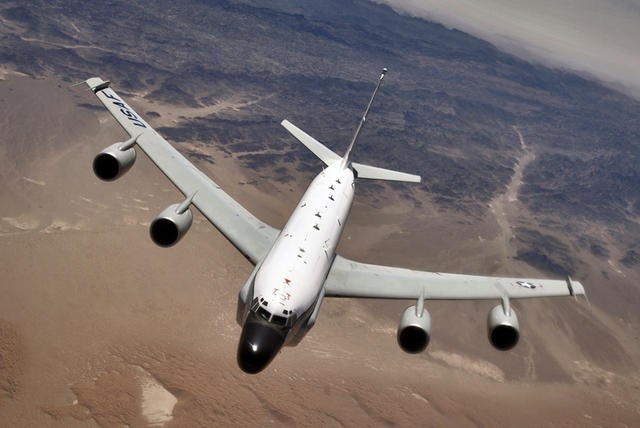A ir Force and coalition counterparts in Southwest Asia routinely meet to discuss weapons and tactics—at an operational level. “This is our chance to ask ourselves if we’re doing what we need to do to achieve the desired effects and decide what we can do to improve upon our tactics and our processes,” says Col. William Mullins, 379th Expeditionary Operations Group commander. The most recent four-day session covered, as one of its topics, how to integrate the RC-135 Rivet Joint with non-traditional intelligence-surveillance-reconnaissance platforms—fighters and bombers, reports Capt. Teresa Sullivan. The result was development of a process for the Rivet Joint to continue its electronic snooping role and working with strike aircraft to support ground forces. Mullins notes, “We’re seeing results, and it’s all good.”
ir Force and coalition counterparts in Southwest Asia routinely meet to discuss weapons and tactics—at an operational level. “This is our chance to ask ourselves if we’re doing what we need to do to achieve the desired effects and decide what we can do to improve upon our tactics and our processes,” says Col. William Mullins, 379th Expeditionary Operations Group commander. The most recent four-day session covered, as one of its topics, how to integrate the RC-135 Rivet Joint with non-traditional intelligence-surveillance-reconnaissance platforms—fighters and bombers, reports Capt. Teresa Sullivan. The result was development of a process for the Rivet Joint to continue its electronic snooping role and working with strike aircraft to support ground forces. Mullins notes, “We’re seeing results, and it’s all good.”
The Space Force is planning improvements at its launch ranges to better accommodate the logistics and infrastructure demands that come with the launch industry’s shift toward reusable rockets, according to the commanders of the service’s two launch deltas.



